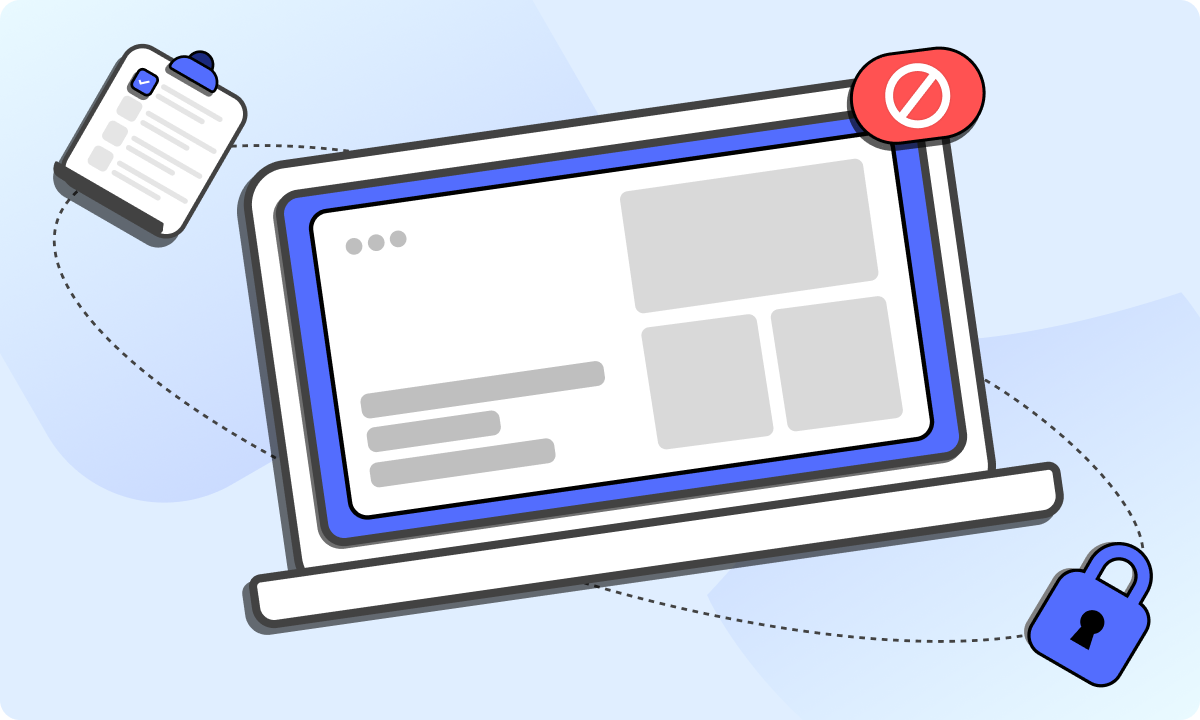Struggling to focus when you’re working from home? As remote work becomes increasingly common, many people find it challenging to keep their focus in a home environment. According to a survey by FlexJobs, 65% of respondents reported that they are more productive working from home. While this is good news, the biggest challenge for work-from-home (WFH) employees is to maintain that high level of productivity. This requires effective strategies and proper discipline.
Let’s check out some practical tips on how to focus while working from home. These tips will help you establish a more productive work environment, minimize distractions, and keep a healthy work-life balance.
How to Focus While Working from Home: 11 Ways
Working from home has its perks and challenges. While it offers flexibility, it can also lead to distractions. Here are eleven practical tips to help you stay focused and productive while working from home:
1. Maximize BlockSite’s Features
BlockSite is available as a browser extension and mobile app for both Android and iOS, which you can use to help limit your access to specific sites that might distract you. It has a variety of tools that you should explore to balance your time for browsing and opening non-relevant apps:
Block List
This basically blocks access to sites or apps that you added to this list. Doing this prevents you from getting tempted so you focus back on finishing that important work-related task.
Blocking Schedule
Blocking doesn’t have to be permanent. You can set a schedule for these blocks for the purpose of managing your time properly. It’s a good way to reward yourself during non-working hours.
Focus Mode
If you want to learn how to concentrate working from home, then you should try this feature. The Focus Mode helps you stay on task by blocking distracting websites and apps. You can set specific times to focus, such as 25-minute work sessions followed by 5-minute breaks, similar to the Pomodoro Technique. This reduces the urge to check social media or other non-work sites during work hours.
For example, you can schedule 25-minute work sessions followed by 5-minute breaks, mimicking the Pomodoro Technique. This helps maintain your productivity by reducing the temptation to browse social media or other non-work-related sites during work hours.
2. Create a Dedicated Workspace
You should designate a specific area in your home for work. Better choose a quiet spot with minimal distractions and make sure that you have everything you need here, like the following:
- Your computer or laptop
- Notepad
- Pen
- A comfortable chair
3. Set a Daily Schedule
It would be wise to establish a routine similar to a traditional workday. Start and finish your work at the same time each day, and schedule breaks and lunch as you would in an office. When you practice consistency, you’ll easily get into work mode and this could increase your efficiency.
4. Dress for Work
It might sound ridiculous but dressing as if you’re going to the office can change your mindset for the better. Wearing work attire instead of staying in pajamas makes you feel more professional and ready to tackle tasks. It creates a mental distinction between relaxation and work time.
5. Plan Ahead
Make it a habit to spend a few minutes each evening planning the next day. Make a to-do list with tasks you need to complete and prioritize them based on importance and deadlines. A clear plan helps you start the day with purpose and reduces procrastination.
6. Stay Connected with Colleagues
As they say, no man is an island. Regular communication with your team helps reduce isolation and keeps you accountable. Use the following to stay in touch:
- Video calls
- Chat apps
- Virtual meetings
Aside from catching up, it also keeps you in alignment with the team’s goals and projects.
7. Take Regular Breaks
Short breaks throughout the day prevent burnout and maintain productivity. Step away from your workspace, stretch, take a walk, or grab a healthy snack. These breaks refresh your mind and body. Doing these things will also make it easier for you to return to work with renewed focus.
8. Exercise and Stretch
Physical activity is important for mental clarity and focus. Include short exercise routines or stretching sessions in your day, like a quick walk or a short yoga session. Doing regular activities like these can help you avoid stress and it can even keep you energized.
And you know? This is also recommended for office workers to prevent burnout. A study posted on the National Library of Medicine found that cardiovascular and resistance exercises can reduce workplace burnout.
9. Practice Mindfulness
There are plenty of mindfulness techniques that can reduce stress and improve your concentration. You can explore the following:
- Walking meditation
- Breathing exercises
- Sensory exercises
- Coloring and drawing
- Visualization
It is highly recommended that you spend a few minutes each day practicing these activities related to mindfulness to calm your mind. This can be very effective especially during busy periods.
10. Manage Your Environment
Always keep your workspace tidy and well-stocked with the necessary supplies. Having a clean and organized environment will contribute to your goal of staying in focus and lessen the distractions as well. Also check that your workspace is comfortable and ergonomically friendly to avoid physical discomfort. You certainly won’t feel comfortable sitting in a broken chair or using a small table.
11. Maintain a Healthy Work-Life Balance
It’s important for you to set clear boundaries between work and personal life. Define your work hours and stick to them. And after work, turn off those notifications and make time for doing enjoyable activities. This form of separation helps you recharge and prevents burnout. In addition, it can make you more productive during work hours.
Staying Focused While Working from Home Is Achievable!
With the right strategies and practices, it’s definitely achievable. Setting a daily schedule, using tools like BlockSite’s Focus Mode, and maintaining your mental and physical well-being can greatly improve your productivity. Just stick to these methods, and you’ll soon find yourself getting more done while comfortably working from home.
FAQs
How can I avoid feeling lonely when working from home?
Working from home can sometimes make you feel lonely and in order to prevent this, you should stay in touch with your coworkers. It doesn’t have to be a long conversation. The point is, you need to stay connected. A few creative ideas can be planning virtual coffee breaks or team meetings to interact regularly. You might also want to consider joining online groups or forums related to your work.
What are some good exercises to do during work breaks?
Taking short breaks to exercise can boost your energy and focus. Simple activities like stretching, yoga, or a quick walk around your home are effective. Desk exercises, such as chair squats or seated leg lifts, can also be done without leaving your workspace. These small movements help reduce tension and improve circulation.
How do I set boundaries between work and personal life?
Creating a clear divide between work and home life is a must. Set specific work hours and stick to them. Use a separate room or area in your home for work to create a physical boundary. Turn off work-related notifications after your workday ends. Communicate your schedule to family or housemates so that they know the times when you are working and when you are available.
What mindfulness techniques can help improve focus?
Mindfulness practices can help reduce stress and increase concentration. Meditation is a simple technique where you sit quietly and focus on your breathing. Deep-breathing exercises can calm your mind and help you refocus. Take a few minutes each day to practice gratitude or mindful walking. Small things like these can do wonders to your mental health.
How helpful is a daily routine for productivity?
Having a consistent daily routine is very helpful for staying productive. It helps you manage your time better and signals to your brain when it’s time to work and when it’s time to relax. Start your day at the same time, include regular breaks, and plan your tasks in advance. A well-structured routine keeps you organized and reduces the temptation to procrastinate.





